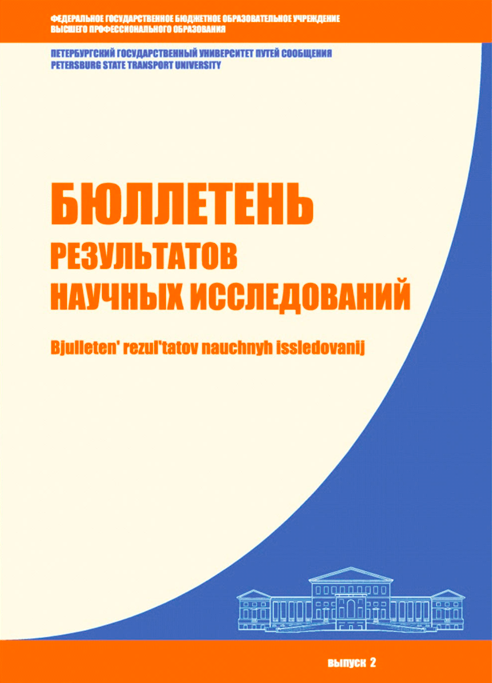graduate student
Russian Federation
Russian Federation
Purpose: To ascertain the efficacy of vibration isolation of elastic under-ballast materials under vibrodynamic impact. Methods: In the course of the experiments, real conditions of dynamic loads from rolling stock were simulated at a given range of exciting frequencies using specialised test equipment. This made it possible to evaluate the dynamic characteristics and vibration transmissibility of two samples of under-ballast mats having different thickness and density. Results: A comprehensive investigation was conducted to ascertain the dynamic characteristics of the samples under study. This investigation revealed the dependence of vibration isolation efficiency on the frequency range, the type of material used, and its stiffness. Optimal vibration isolation of the tested samples of under-ballast mats was observed in the frequency range from 28 to 30 Hz. In this range, the rigid and dense sample UBM-1 demonstrates better damping properties than the flexible and thickened sample UBM-2. Practical significance: The study provides a comprehensive modelling of field conditions, facilitating a more precise understanding of vibration transmissibility and the elastic properties of under-ballast mats. The results obtained make it possible to optimise the choice of vibration-insulating elastic materials and determine the effectiveness of vibration isolation in the low-frequency range, critical for infrastructure. This provides significant indicators of reducing the level of dynamic impacts transmitted to the track base.
Vibration isolation, under-ballast mats, vibrodynamic impact, vibration transmissibility, complex elastic modulus, loss factor, natural oscillation frequency
1. Ntotsios E. The effect of track load correlation on ground-borne vibration from railways / E. Ntotsios, D. Thompson, M. Hussein // Journal of Sound and Vibration. — 2017. — Vol. 402. — Pp. 142–163.
2. Kouroussis G. Railway ground vibrations induced by wheel and rail singular defects / G. Kouroussis, D. P. Connolly, G. Alexandrou, K. Vogiatzis // Vehicle System Dynamics. — 2015. — Vol. 53. — Iss. 10. — Pp. 1500–1519.
3. Upravlenie nadezhnost'yu besstykovogo puti / V. S. Lysyuk, V. T. Semenov, V. M. Ermakov; pod red. V. S. Lysyuka. — M.: Transport, 1999. — 373 s.
4. GOST R 70258—2022. Maty podballastnye dlya vibroizolyacii konstrukcii verhnego stroeniya puti. Metody ispytaniy. — M.: NIISF RAASN, 2022. — 12 s.
5. Kraskiewicz C. Static and dynamic characteristics of resilient mats for vibration isolation of railway tracks / C. Kraskiewicz, C. Lipko, M. Pludowska, A. Zbiciak // Procedia Engineering. — 2016. — Vol. 153. — Pp. 317–324.
6. DIN 45673-1:2010-08 Mechanical vibration. Resilient elements used in railway tracks. Part 1: Terms and definitions, classification, test procedures.
7. DIN V 45673-4-2008 Mechanical vibration. Resilient elements used in railway tracks. Part 4: Analytical evaluation of insertion loss of mounted track systems.
8. Wettschureck R. G. Vibration and structure-borne sound isolation by means of cellular poly- urethane (PUR) elastomers / R. G. Wettschureck // Proceedings Vibrationsdagen (SVIB). — Stockholm, Sweden, 1994. — Pp. 21–52.
9. Wettschureck R. G. Reduction of structure-borne noise emissions from above-ground railway lines by means of ballast mats / R. G. Wettschureck, M. Heim, S. Mühlbachler // Proceedings Inter- noise 97. — Budapest, 1997. — Pp. 577–580.
10. GOST R 58017—2017. Plastmassy. Opredelenie mehanicheskih svoystv pri dinamicheskom nagruzhenii. Szhatie. — M.: Standartinform, 2017. — 12 s.









